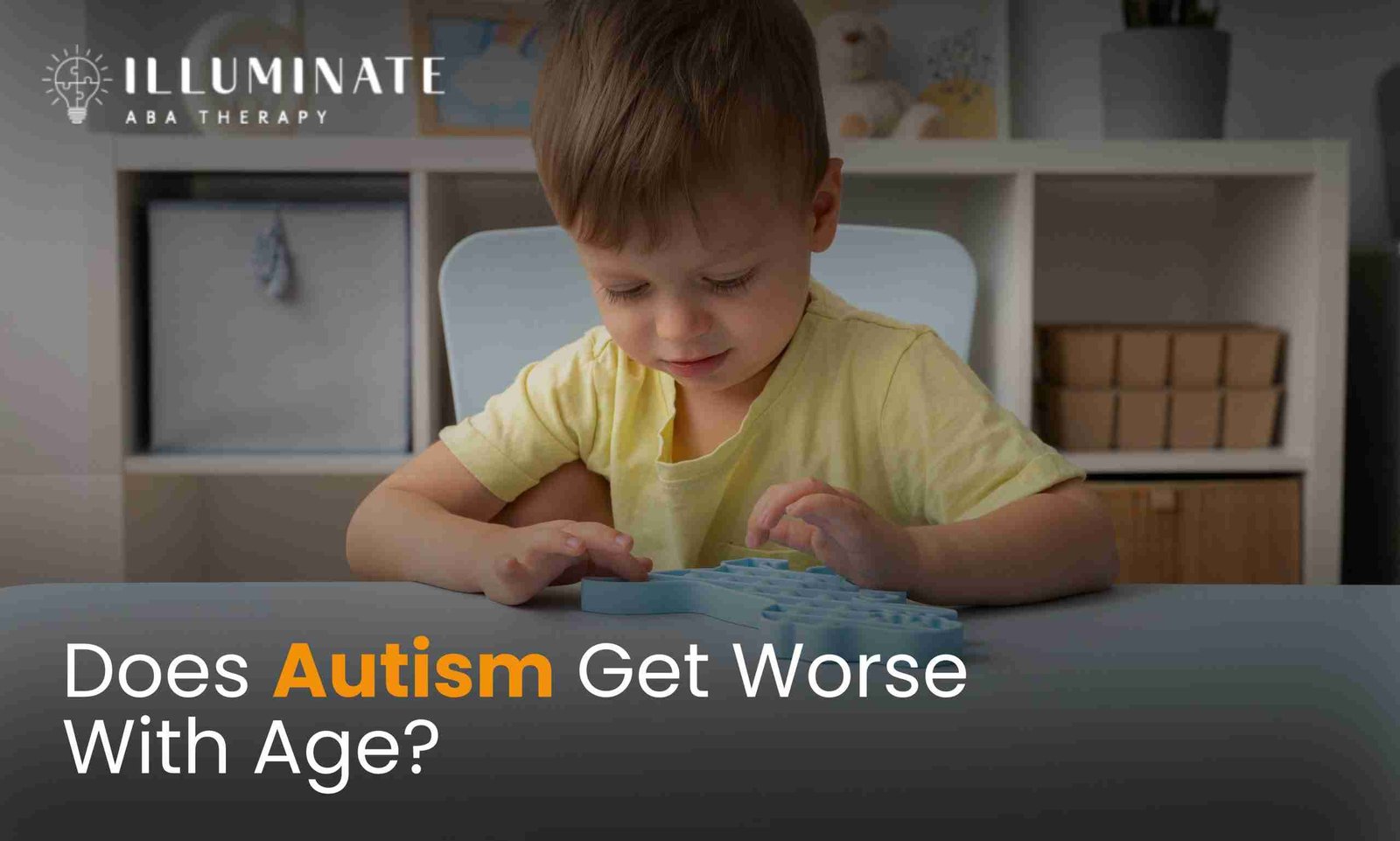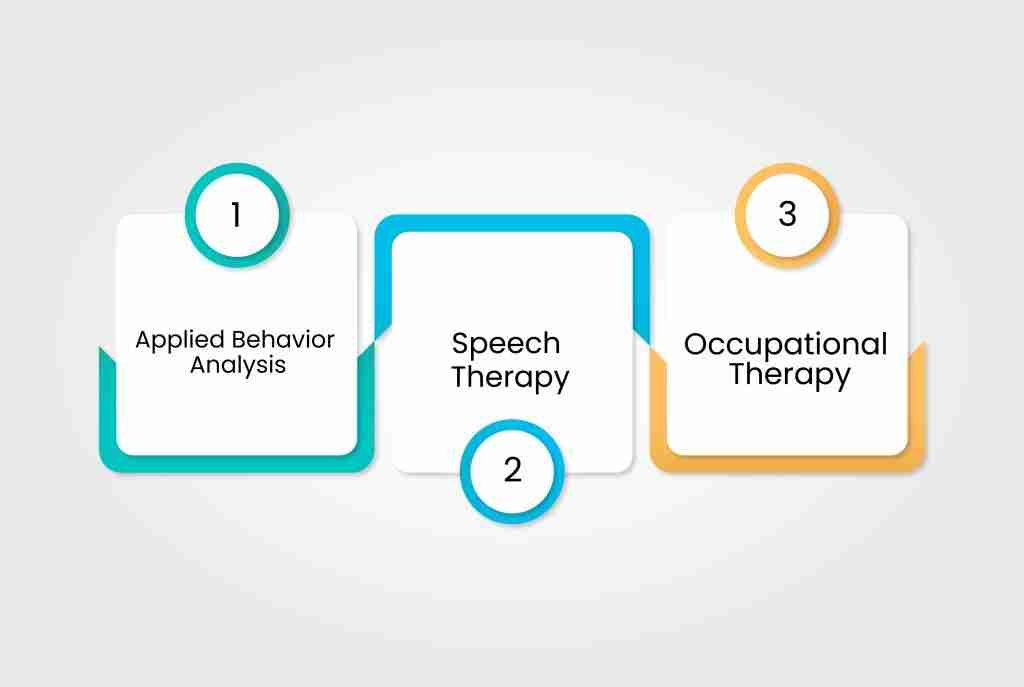
Does Autism Get Worse With Age? Illuminate ABA
According to the Centers for Disease Control and Prevention, every 1 in 36 children is born with autism, and the average life expectancy ranges between 39 years and 58 years. As autism spectrum disorder is a neurodevelopmental disorder that impacts the communication, social interaction, and adaptive behaviors of a child, a question arises whether the condition remains the same throughout the lifespan or whether it intensifies or lessens with time.
This article is all about how the symptoms of autism change in different phases of life.
Do Autism Signs Worsen With Age?
The first and foremost thing one needs to understand is autism is a lifelong condition, and it is not necessary that the symptoms and signs worsen with time. However, the symptoms and their impact can evolve with the increase in age.
Studies show that the core symptoms, such as challenges in communication skills, social interactions, and repetitive behaviors, remain unchanged throughout the life span. However, the manifestation of these behaviors changes with age.
For example, if a child flaps his hands when he is excited in childhood, it may change into avoiding social situations in adulthood.
Factors Influencing Changes in Symptoms

The following factors have a great influence on changing the symptoms with increasing age.
- Co-occurring conditions
People with autism are at high risk of developing co-curring conditions such as anxiety, depression, and ADHD that can worsen the signs. For example, if an autistic person is having anxiety at the same time, they are more likely to indulge in repetitive behaviors and experience increased sensory sensitivity.
Similarly, in adolescence, experiencing social differences and the inability to meet societal expectations can develop depression. This may lead to social isolation and communication difficulties. Altogether, these symptoms seem to be as “Autism is worsening,” whereas, in reality, the person is struggling with co-curring conditions.
- Environmental and social factors
As with time, ASD children experience significant life changes, such as the transition from resource centers to schools to workspaces. These transitions come with new routines, new expectations, and new surroundings.
For an individual with autism spectrum disorder (ASD), adapting to anything “new” is quite difficult. So, when they encounter changes, there are high chances of increased anxiety and more behavioral issues.
Additionally, the surrounding environment also has a direct impact on the worsening of the symptoms. If an autistic individual is working in a supportive and conducive environment with understanding colleagues, they can better manage the autism symptoms. However, the negative environment and discouragement can increase the difficulties.
The Myth of “Recovery”
One of the most common misconceptions associated with autism spectrum disorder is that it can be “recovered.” It is crucial to understand that there is a clear difference between symptom management and recovery, and in this case, recovery is not possible. All you can do is seek support from therapies, provide unwavering support, and accept them the way they are, as it helps in managing the symptoms.
Symptom management vs recovery
Managing symptoms is a realistic and possible approach that comprises therapies and strategies that can help the individual in living their lives independently. This includes therapies like applied behavioral analysis (ABA), speech and language therapy, and occupational therapy, which uses targeted interventions to bring improvement in areas lacking.
Whereas recovery from autism is a myth and an unrealistic approach as it is a lifelong condition. So, instead of struggling for the recovery of autistic people, we need to seek help from a realistic approach. This helps them achieve independence, improving social functioning, and collectively leads towards a better quality of life.
Role of Early Intervention
Early interventions play a crucial role in improving the outcomes for individuals with autism spectrum disorder (ASD). Early diagnosis helps in doing early interventions in the developmental stage of children, which can significantly improve their quality of life.
As neuroplasticity— the brain’s ability to reorganize- is highly active in childhood, there is a high chance that the child will learn positive behaviors more quickly. Moreover, early support helps them in developing communication skills, social skills, and adaptive behaviors that reduce the impacts of autism.
Effective early interventions for autism

Here are a few of the early interventions that have a significant impact on reducing the symptoms of autism spectrum disorder (ASD).
- Applied Behavior Analysis: It is a structured and proven therapy that focuses on the reinforcement of positive behaviors and reducing the negative ones. This therapy is helpful in improving communication skills, social interactions, and adaptive behaviors.
- Speech Therapy: As most autistic individuals struggle with communication, speech therapy helps them improve their language and speech skills. From making them learn vocabulary to pragmatic language skills, this therapy encompasses all.
- Occupational Therapy: The core focus of occupational therapy is to help children develop basic life skills. An occupational therapist works on motor skills, adaptive behaviors, and sensory processing of the child.
Managing Autism in Adulthood
As autistic people grow up, support and therapies become more crucial than ever for effective management of the symptoms. Emotional support from friends and family and professional support from the therapist collectively play a key role in managing the symptoms so that they can live independent and sustainable lives as well.
Role of therapy and medication in managing autism in adulthood
Apart from support, therapy sessions and medications also help in coping with the symptoms and reduce the chances of worsening symptoms. Even if early interventions have not been made, multiple therapies, such as cognitive behavioral therapy, speech therapy, and occupational therapy, can improve the quality of life.
However, there’s no direct medication that can treat “autism” itself, but there are medications that help in managing autism symptoms and co-curring conditions. Professionals usually prescribe anti-depressants, anti-psychotics, stimulants, and anxiolytics to manage depression, anxiety, ADHD, aggression, etc.
Conclusion
So, autism does not get worse with age; however, the manifestation of the symptoms changes with time due to life events. Seeking help from therapists and professionals is always a way to improve the symptoms of autism spectrum disorder (ASD).
Read More: Toilet/Potty Training For Autism


Leave a Reply
You must be logged in to post a comment.